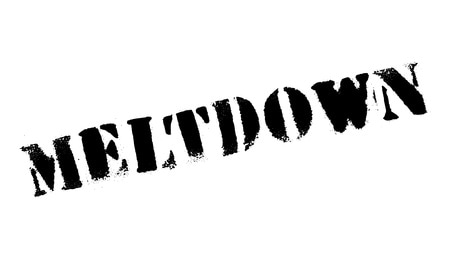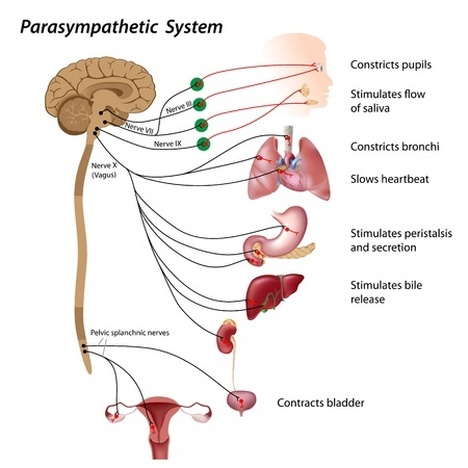|
(Part One of a Three Part Series on Anxiety)
I’m not an expert on anxiety, nor do I claim to be. But I do have some nuggets of insight to share. What I do know is that feeling anxiety is part of our neurological wiring; it is not necessarily a bad thing. Then there’s the anxiety present in situations that can preoccupy you and keep you from functioning to your best abilities. And then there’s debilitating anxiety – the kind that some may treat with prescription drugs. My experience and sharing is geared more towards the first two kinds of anxiety. Specifically, I want to share what I’ve discovered in study and in coaching leaders that have grappled with anxiety. I’ll share one example. I once coached a senior leader who struggled with anxiety on a daily basis. It was present to the point that she would avoid confrontation due to discomfort and anxious feelings. Somewhere in the middle of our 6-month engagement, she confided that she had tried therapy, somatic bodywork and even working with horses as ways to help her manage the anxiety she felt. However, she felt our coaching process was the thing that really worked for her. So, what exactly did we do that was effective for her? First, let’s start with a little context. Lisa Feldman Barrett, neuroscientist and author of How Emotions are Made, has done some groundbreaking thinking and research in the realm of emotions. In her book, she asks us to consider a new way of thinking about emotions, which I’ll apply here to help us think about anxiety. Based on her research and findings, emotions are predictions we make as we go through life. In other words, we predict how we are going to feel versus simply reacting to the outside world. Our predictions are based on prior learned concepts for feelings, our biology, and our experiences. We make the prediction of what is going to happen, and signal our body systems to allocate the appropriate energy and resources in that moment. This then translates into a concept or name of an emotion based on our past experience and how our culture and society helped us define this sensation. Our brain then engages in correcting for the prediction, based on what actually happens. This all happens very quickly. And hopefully, we then begin to predict more accurately based on past experience. However, according to Feldman Barrett, “Anxiety sufferers, for whatever reasons, have weakened connections between several key hubs in the interoceptive network, including the amygdala….These weakened connections likely translate into an anxious brain that is clumsy at crafting predictions to match the immediate circumstances, and that fails to learn effectively from experience. You might predict threats needlessly, or create uncertainty by predicting imprecisely or not at all.” So, if we view anxiety as an issue of prediction, we may understand our natural regulation system to be out of balance. From a coaching standpoint, the process then is about equipping the leader with sufficient tools to predict more accurately, lessening the gap between prediction and prediction error. In the case of my client, we first started out by helping her define a different way of being. We helped her define a powerful, internal, confident voice. We even gave it a name and a personality. In other words, I asked her, “What would your XYZ powerful voice say in such a situation?” so she knew how to call on that voice when she needed it. In coaching, it’s really important to separate out the many different voices and narratives that run through our minds, and to develop or strengthen the voices that serve us the most. Because, as you guessed it, different ways of being take in and process the world differently and predict different things! Then, we identified the thread of the negative, critical voice that aligned with memories of some of her anxious predictions. She recently shared with me in helping to edit this piece of writing that she felt her anxiety was not the result of any one relationship or given thing, but rather, a result of the complex combination of circumstances and environment in which she grew up. In one session, we practiced asserting herself more so she could effectively lead her team. I pretended to take the role of someone in her life she had felt anxious about with respect to meeting his or her expectations. I wanted her to confront me, to speak directly to me as if I were that person. So I asked her to step into her more powerful voice, to really feel it first. I stood in front of her. As she spoke to me, I pushed back with words that this person might have said to her. I asked her how she was feeling in her body. As she checked in with her feelings, we noticed her tendency was to want to physically move away from the interaction. With her permission, I asked her to step closer in front of me, and to pay attention to what was happening to her body. Then, I asked her to speak from her empowered voice to me. With awareness of her body, the more forceful, confident voice emerged. She stepped into her new, powerful way of being, moving towards me with courage vs. anxiety. In a session following, we practiced what she would say to a real person - one of the team members she needed to confront. In her logical, matter of fact way, she took a stab. I could feel the hesitation and fear in her voice and body. She was back to predicting self-doubt, anxiety and fear. We practiced some more, in her more powerful voice and went through various “what ifs.” What if he gets angry? What if he reacts this way? What if he says this? By going through various scenarios of what ifs, and checking in with her body, we worked on getting her comfortable with and expanding the possibilities for what she might predict from such an interaction. Before, she was stuck in an emotional prediction cycle around confrontation, based on her past experiences and who she was being at the time of those experiences. By stepping into a different way of being, as well as simulating scenarios for different possible outcomes, she started to alter the prediction her mind was so used to making around confrontation. It’s not that we got rid of her anxiety, but we gave her the tools to interrupt the prediction cycle she was so used to being in with respect to confrontation. So the next time she had to confront someone, she could do so predicting a different outcome. Our emotions are wired to concepts we are taught from the time we are infants, to old beliefs and to stories about our self-worth and ourselves. By exploring what we are predicting and paying attention to where emotions are felt in our body, we can start to empower ourselves to shift our feelings. Add to that a few coaching tools and simulation to help clients see other outcomes are possible, it’s possible to empower leaders out of their anxiety prediction loop. It does not happen overnight, and also takes great trust and safety within the relationship, but it is possible to start to change the way we predict, and in doing so, change our predictions around experiences that would have caused us anxiety in the past. Like What You Read? Sign Up for My Monthly E-news!
1 Comment
Last year, I wrote a post on what to do when someone around you gets triggered. In the spirit of good leadership, I’d like to spin it around this time and really focus on what to do when YOU are triggered in a situation.
What is a trigger? Triggers are a little different than getting justifiably angry or emotional at something. The main difference is that triggers show up when something seemingly normal has a very strong impact on you, to the point where you might feel yourself lashing out or wanting to run and hide. (In other words, the reaction is disproportionate to the stimulus, as touted author and internationally known psychologist Daniel Goleman would say). Some people respond by fighting, and others respond by fleeing. Adrenaline and cortisol flood the body. All rational thought goes out the window. Simply put, your pre-frontal cortex, the part of your brain responsible for higher executive thinking, is no longer in control. Your mammalian brain (amygdala), however, is. You ROAR! driven by your basic animal instinct. So the question is, how do we manage our triggers? We all get triggered by something at one time or another. Here’s a secret about skilled leaders: they know how to process, manage and recover quickly from a trigger. Here are some tips on how to get started. 1. Become present to the feelings in your body & BREATHE!!! Realizing you are triggered is the first step. Often, you’ll know because it will feel like your blood will start to boil. You may feel tightness in your jaw, or in your gut. I remember getting triggered once by an employee. I don’t remember what the trigger was, but I do remember the feeling – one of anger and frustration. My speech got terse and my neck tight. What I wasn’t aware of at the time was that I was triggered. So what can you do if this happens? First, really become present with the feeling, and notice it. Notice where you might feel tense in your body (like your jaw or your neck might freeze up) and breathe into it. If you happen to find yourself getting triggered in a space like a meeting, take a break, give yourself some time to regain your composure, and then come back. Space is your friend. One technique that is really helpful for leaders is to say, “I don’t like how I’m showing up right now. I want to be at my best for this conversation. Let’s continue this discussion at another time.” Or, "That's an interesting idea. Let me check in with my other colleagues and I'll get back to you on this." Giving yourself space to be present to the feeling and breathing into it will help you manage it. Becoming self-aware of your triggers will slowly help you to manage them. Unless you have awareness of your triggers, you can’t address them. 2. Do complex math Well, not really. But counting is a very simple technique to use when you are being triggered. The advice says to count to 10. When you are triggered, your pre-frontal cortex gets hijacked by your mammalian brain, and you are essentially in fight or flight mode, our most basic, animalistic survival instinct. Counting activates the executive function of the brain. I started counting up in 3’s, because it requires more focused thinking and thus requires more of the executive function to do it. (And it did wonders the other day as I waited for 25 minutes while the Office Depot worker continually kept botching up a credit transaction while I was trying to check out. I drove home counting in 3’s and soon I was merry!) By trying to call in that function, you are essentially attempting to bypass your mammalian brain and bring yourself back into using your executive function. You can also write down the numbers, spelling out each one. Note that these are just techniques to use in the moment. You’ll likely need to give space to process the emotion from the trigger after the fact. If you find yourself triggered and about to write an e-mail, STOP. You will be writing a mammalian-brained e-mail. Take some time to stop, breathe and process before writing that email. Or, write it and keep it in your drafts folder. Go back to it in a day or so when you’ve regained your executive function and then send. 3. Stay curious Another way to deal with triggers is to get really curious about the other person that triggered you. If the person is making you flip your lid, you want to get to the point where you can start to take steps to separate their action from their intention. Their action may be making you flip out, but perhaps that was not their intention. If you lash out at them and say they are being this way or doing this because of x, you may find yourself in a vortex of projection. And trust me, you’ll be revealing more about yourself in your words than about anyone else. Here’s some suggested language to use: “I’m curious: what did you mean when you said <fill in the blank>?” or “I’m curious: when you did this, what was your intention?” In my coaching work with clients, what I find is that most of the time, people are not out to trigger others on purpose. However, the person doing the triggering often can benefit from learning to be more self-aware of their actions and how they may impact the triggered person. The person triggered can work on starting to separate the action from the intention. 4. Get to the bottom of it! This is a big one. What you have to understand is that triggers are often associated with experiences from our childhood that caused us to feel threatened or fearful. The mammalian brain kicks in and does everything it can to keep us safe, because that feeling or emotion is just too painful for us to handle. Most of the time, those triggered feelings relate back to feelings of being unloved, worthlessness, and abandonment (I know – grim). BUT!!! And I say this again: everyone has triggers – nobody is without them. Understanding the origins of your triggers can really help shed new light on your relationships, and empower you to take control and responsibility for your own reactions and behaviors when you feel triggered. It’s hard to trace triggers back to their origins, but there are some effective coaching techniques that can help you uncover them. Often, when I help a client trace back the origins of a trigger, they cite that the next time they are triggered, the trigger does not have nearly as much of an impact on them as when they were not aware of their trigger. These are some tips to try. And if you try and don’t always get it right – that’s OK. We are all human, and making changes in our behavior takes some getting used to. And sometimes after mastering one trigger, we’re faced with a new one and have to start all over. Heck, I still discover new triggers in myself from time to time! The point is to try, and to get better at understanding and managing yourself. You can re-pattern the reaction you have to the stimulus. When do you get triggered? How are you able to effectively manage your triggers? We’d love to hear about your experiences in the comments section below! Like what you read? Sign up for my monthly e-news!
It occurred to me the other month that almost every executive leader I know has faced a meltdown at some point in their leadership. Whether it was the nonprofit executive who wept at the daunting task of rebuilding her organization’s entire staff (for like, the 10th time), the small business owner being harassed and taken to court due to a business partnership gone sour, or a financial faux pas leaving the leader of a firm to manage an embarrassing deficit—shit happens. At some point in our human journeys, the systems, pressure, responsibilities, financial anxiety and just sheer workload become too much for people to take, making it impossible for us to hold it all together. In fact, I’m pretty convinced that, until you’ve had a meltdown, (or two, or three) you haven’t yet experienced the true weight of executive leadership. It’s almost like it’s a necessary hazing for effective leadership. But is it? Why do meltdowns happen? To understand them, let’s look at a bit of neuroscience. The Neuroscience of a Meltdown Think resilience. The brain is designed to be self-regulating and energy efficient, and seeks a state of balance. When we are too stressed and our brains are on overload, as I wrote about in “Stress and the Leadership Brain,” we get large releases of norepinephrine and dopamine, the two main chemicals that balance out the prefrontal cortex, the seat of our higher executive functions. And we get releases of cortisol, an inflammatory, stress-induced hormone. As a result, the prefrontal cortex gets knocked out of balance, if you will, resulting in symptoms like lack of empathy, inability to regulate impulses, foggy thinking, poor decision-making and poor memory. In short, our brain’s natural ability to regulate gets thrown off because it is out of balance chemically. Hence, the breakdowns and inability to humanly manage it all. Literally, you are overloaded and your regulating mechanisms are compromised. So, what can you do to keep your head above water and prevent a meltdown? 1. Share power. We usually think about leadership as one captain solely responsible for where a ship will sail. The lone ranger paving the way. By not sharing power, you hold on to more than you can perhaps manage. Your own need to control starts to actually hamper you. Trust me—I’ve been one of those leaders who needed to have personal oversight of everything. Sharing power frees your brain up to take on other things, and builds a sense of buy-in and accountability to results. Of course, the art of this for any leader is figuring out how much to let go and share and how much to retain continued oversight. This is a balance that can only be achieved with your willingness to accept the inevitable mistakes people around you might make in your absence, and trusting that lessons will be learned from those mistakes. Sharing, coupled with a growth mindset of learning from trial and error, is a crucial element in helping leaders manage stress that can lead to meltdowns. 2. Be more vulnerable. “I love being vulnerable, because it’ so comfortable and pleasing to the soul and gets you what you want,” said NO ONE EVER. As tough as vulnerability can feel in our culture, where it is often perceived as weakness, it’s a fallacy of leadership that you as the leader have to always solve for everything. Actually, the more you can admit you don’t know HOW to do something, the more it will free you from obligating yourself to fix it. And that means more brain space for other things (remember what we’re going for here—realistic goals and workloads that don’t send your brain into unhealthy overdrive). It will also give other team members the opportunity to chime in with their expertise. By simply saying “I don’t know” and showing a little vulnerability, you invite in new ideas, perspectives and perhaps a collective way of finding solutions to a problem vs. being the lone ranger needing to fix it. (Note lone ranger reference now twice in this post.) 3. Put a stake in the ground. Remember that old game where a stake with ribbons attached is driven into the ground, and each child would get ahold of a piece of ribbon and frolic around the stake and weave between one another creating a sort of braid around the stake? That’s what I mean here. Defining a stake means that you and your leaders are passionately committed to “dancing around” it and holding it in place. For example, the stake could be quality. It could be integrity. It could be creating community. Whatever you define the stake to be, clarify what it is for your company, or any project, or collaboration. It will help you and your team keep focused so you don’t veer off and start leading into things that do not relate back to the stake, thereby overloading your plate with things other thank the stake, no pun intended. 4. Have someone to talk to. Getting outside support and having someone to talk with on a regular basis can also help you manage overload. Becoming more present to emotions, naming them, feeing them, creates greater integration and resilience. We are constantly regulating one another’s nervous systems. Ever talk with a person suffering from extreme anxiety and find yourself leaving the conversation feeling anxious wanting to ventilate into a paper bag? Ever come across someone who is as calm as a lake and, next thing you know, you get a warm, fuzzy feeling inside and feel the calmness within you? (This has to do with a concept called sense of self, but that topic is for another post.) So if you are on overload, find calming people to talk with—those whose energy can help to have a positive regulatory effect on your nervous system is key. 5. Invest in people and grow the leadership around you. Leaders fill gaps. And well, when the going gets tough and things start slipping through your leadership cracks, you will be thankful there are people around you who have the leadership skills to fill in those cracks. If you are just surrounded by followers of your word, you will be overwhelmed—all the time. Investing in growing leadership capabilities of those around you and giving up some of your power can better ensure gaps are filled when shit hits the fan. And I promise you this—shit WILL hit the fan. Investment means taking time to coach and mentor people in your organization. If you don’t have the time, hire external coaches, send your team members to a good quality leadership immersion program, or give them more responsibilities and coach them to succeed. Your biggest assets are your people. Having strong people around you will help you manage the load better. What did you learn from your leadership meltdown? If you had to do it all over again, what advice would you give? The Neuroscience of Stress Everyone needs a “just right” amount of arousal chemicals for optimal functioning of the prefrontal cortex (PFC), the area of the brain responsible for our executive functioning, including thoughtful decision-making and planning for the future, among other things. Picture a bell curve. To the right of the curve is increased stress / stimulation, and to the left of the curve is decreased stress / stimulation. Our cortex is regulated by two main chemicals (dopamine and norepinephrine) and becomes stimulated (or not) based on the task at hand. When we are alert and interested, we get the right amount of chemical release. But when we are stressed and out of control, we get BIG releases of these chemicals. All the connections in this part of the brain become dysfunctional, engaging other kinds of receptors that actually impair prefrontal cortex function. The impact of being over-stimulated or under-stimulated results in the SAME cognitive impairment of the brain: foggy thinking, poor memory, lack of empathy, inability to regulate impulses. As well, chronic stress results in actual architectural changes in the cortex. You actually start losing dendrites, a branched part of a neuron involved in cell to cell electrochemical stimulation. Stress is VERY real, and actually has the ability to alter the structural make up of your brain. Cray, eh? So what does this have to do with YOU? Behavior from the top trickles down to your team, so if you are a stressed leader and not taking care of yourself, how can you possibly model good behavior to your colleagues and employees? Moreover, as a leader, you need to be able to access your brain when it is at its best (in balance). When you are overstressed or under-stimulated, you don’t get optimal executive functioning. Below, I share some strategies for managing stress and getting your PFC closer to balance or “online” as we coaches like to say. Name Your Emotions According to BeAbove Leadership, an organization specializing in the intersectionality of neuroscience, consciousness and leadership, “research shows that simply naming an emotion reduces amygdala activity.” This is one of the reasons I listen to my clients and try to help them name the emotions that they are feeling. Often, a client will show up at a session experiencing a whole host of different feelings. After listening very carefully to them, I often reflect what it is I hear them saying, and then attempt to name an emotion. I will say, “it sounds like ‘guilt’ or it sounds like ‘grief,’” and in doing that, it helps them make sense of their own emotions. If I’m not right on with the emotion, it’s the opportunity for them to say, for example, “no, actually it’s not guilt; it’s more ambivalence.” Journaling how you are feeling each day can also markedly help with stress management; simply waking up in the morning and taking 10 minutes to write down how you are feeling that day can help you process stressful feelings when you don’t have an empathetic listener. Reframe Your Perspective Shifting and reframing your perspective is one way to effectively reduce stress. I once left a coaching session feeling a bit stunned. My “inner child” wanted to flee. A client who was feeling a lot of anger in his life had taken it out on me by yelling at me and insulting the coaching profession. I left feeling as if I had failed, and the experience had me questioning my coaching abilities. The “stun” was my fight or flight. In that moment, my prefrontal cortex got (PFC) stressed, and I had very little access to it, as it was flooded with dopamine and norepinephrine. After some introspection and self-coaching, I was able to reframe this session as a gift instead of an utter disaster. Though it felt stressful for me, my client had triggered something that reminded me of how some people would lash out at me for things when I was growing up, thereby stimulating a very emotional response and memory to the stressor. And this made me feel worthless. So in bringing up this feeling again was an opportunity to heal it, to use my PFC to think more about it and to calm my stress response and self-manage through difficult to be with emotions. Moreover, I realized that my client felt safe enough to express his anger with me. Following that we had a breakthrough session and he showed up ready and willing to be coached. Taking the time to think and reframe a stressful event can help build a new neural pathway to thinking about a situation, and bring the PFC back online to help you make sense of your own emotions. Practice Focus and Attention The data from studies relating to focus and attention just gets more and more fascinating, particularly around meditation. It’s not just “new-agey stuff.” Studies show that meditation changes the composition of the brain. Long-term meditators have increased amounts of grey matter in parts of the brain associated with sensory functions, and they also have more grey matter in the PFC. Some studies indicate that meditation also reduces the size of the amygdala, the part of the brain responsible for the fight or flight “freeze” response of the brain and strengthens the brain region responsible for processing information related to people perceived as being different front you (our seat of empathy). What’s this got to do with stress? Well, the data suggests that meditation builds more “good” types of connections in the brain, to help it become more resilient to stress. So with more focus and attention, you can build your resilience and have stronger connections between the logical and empathetic areas of your higher executive functioning brain and your limbic system, making you more resilient to stress. Make a Powerful Choice When you are out of balance on the curve, sometimes it requires you to make some lifestyle choices, and sometimes it requires you to make powerful choices. The difference between just making a choice and a POWERFUL choice is that there is often more at stake with the powerful choice. A powerful choice might feel more difficult to make because the consequences of the choice are so life-changing that it is too scary to think about removing the source of the stress. Powerful choices often require courage, as in the event of choosing to quit a job, get out of a toxic relationship, or simply to just stop doing something. Lastly, our PFC and the relevant chemical release is proportional to the task at hand. While some might feel a little stimulation from something and it feels like a good amount of stimulation, for others it can provoke a much stronger chemical response and overload the PFC with chemicals. What tips and strategies have you picked up along the way to manage your stress? When you are feeling like you want to “fight or flee,” how have you gotten your PFC back online to where things feel just right? Like What You Read? Sign up for my monthly e-news!
Let’s start with morning rituals. In the past year-and-a-half, I developed a morning ritual consisting of meditation, journaling and consciously assessing on a scale of 1-10 how happy I wake up on that day (10 being completely blissed out to the max, and 0 at a basic level of hopelessness). This may seem excessive and even weird, I know. (Those of you who really know me know that I am a little weird anyway!) But in the discipline of coaching, self care actually becomes a critical ally for being available and offering yourself at your highest level in service to your clients. That is the reason I focus on how I feel each morning so much. Anyway, the process has trained me to be more aware of how I’m feeling in the moment. It has helped me to reflect on the circumstances, relationships or events that made me choose that number on a daily basis. This self-reflection, along with spending the past 4 years constantly reading up on the latest neuroscience research on happiness, inspired me to share my insights about happiness. Why is it that so many people who seemingly have everything – a thriving business, millions of dollars in the bank, a seemingly stable relationship – still rank low on their happiness index? What REALLY makes us happy? How can we bring more happiness into our lives? 1. Understand that your brain is plastic Neuroplasticity is, simply put, the brain’s ability to change over time. And studies show we do actually have a happiness set point. In other words, no matter how much tragedy or what happens to us, we go back to a set point of happiness. (It’s the reason why, for example, there is no real change in one’s happiness set point before they win the lottery vs. after they win.) Psychology says there are a few things you can do to increase your happiness baseline – namely, focusing on gratitude and service. Similarly, research shows that meditation grows areas in our brain associated with positivity (left hemisphere) and compassion (right hemisphere), which can also increase our happiness set point. In my experience, it IS possible to re-wire your happiness set point, if even just to give it a slight increase. So, start with the belief in your own neuroplasticity. Actually, it’s not just a belief - it’s neuroscience! 2. Feel the lows in order to feel the highs Some days I have woken up and felt like a 7 in terms of happiness and have thought, Hey, I’m doing pretty good today. And then upon further reflection, that same morning I could also be in touch with a deep sadness about something. How can we be profoundly happy and at the same time profoundly sad about something? As self-awareness increases, our ability to identify and feel two perhaps very distinct feelings at once also becomes heightened. We become more aware of our integration. The sadness doesn’t trump my happiness per se, but they both exist in me at the same time. Brené Brown, the touted TEDX speaker, was spot-on in her famous Ted Talk on vulnerability when she pointed out that when we suppress our negative emotions (depression, frustration, sadness, etc.), we end up suppressing the positive ones as well – joy, fulfillment, happiness. So to feel those high places, you absolutely need to take trips to the dark, deep, dank, hopeless emotions of your subconscious basement. I know – I hate going there as well … like HATE! But what I’ve discovered from being able to “be” with those hard emotions and to really feel the lows, is that it helped open up the space to experience the more positive emotions. Whether through coaching, group get-togethers, having an amazing friend with a keen ability to listen or even writing about these feelings, the more we can embrace this idea of feeling places that are not comfortable for us emotionally, the more we make space and open ourselves up to feeling the positive emotions of life. For example, I started journaling a few years back as part of my daily routine. It helped pass so many feelings through me that today I don’t know what I would do without this journaling practice. I felt a visible improvement in my mood and happiness on a DAILY basis, simply from having daily self-reflection. Think of it like going to the bathroom; in the same way that you have to release stuff from your gut to clean out your system and make it available for more food and energy to process, reflection allows you to do the same cleaning with your brain. Heh heh. :) 3. Hum (I know it sounds weird, but trust me on this one!) For this, you need to know about the vagus nerve, our 10th cranial nerve. The vagus nerve is fascinating and stimulating (literally), as it is the only nerve that connects to every major organ in the human body. If you haven’t Googled “vagus nerve,” you absolutely should because it is fascinating! So fascinating, it makes me want to start a t-shirt line in honor of its critical importance to our life force and evolution of consciousness and sell it in hipster card shops in Oakland! According to this article on vagus nerve stimulation, low vagal tone (an internal biological process referring to the activity of the vagus nerve, according to Wikipedia) has been linked to depression, inflammation, diabetes and other ailments. Humming (along with slow breathing and other things) was cited as a process that actually INCREASES vagal tone by stimulating the vagus nerve. After reading this, it hit me. I realized that I was ALWAYS humming SOMETHING. Walking in the grocery store, driving my car, cleaning the house and definitely while I was sitting on my surfboard, I always had a tune in my head that I quietly hummed to myself. Could it be that humming was responsible, in part, for my happiness? Stress hormones (cortisol, adrenaline and even dopamine) are released in us when we are at lower level resonating consciousness (the states of fear, hopelessness, frustration). Another way to think about this is that our pre-frontal cortex (PFC) or higher level thinking brain gets knocked "offline" and norepinephrine and dopamine (the two main chemicals balancing healthy function of the PFC) are then thrown off balance. By simply humming and constantly stimulating your vagus nerve, you increase vagal tone, and actually equalize some of the inflammatory hormones in the body. In other words, we are equipped with an internal stress regulator! This is the scientific reason behind why something like chanting OM is associated with bringing in peace and resonance. It’s because it’s actually stimulating the vagus nerve and increasing our vagal tone. It’s why music, dancing, drumming and vibrations have played such a crucial role for us through the evolution of humanity and spirituality. So, the next time you feel a pang of anxiety come on, try humming. Try it when you are driving or walking. Just hum to yourself always. In fact, quit reading this and go and hum! 4. Protect yourself from toxic people It took a lot of lessons – A LOT – to figure out how to spot toxic energy and people, and to make the conscious choice NOT to engage. Admittedly, I get swept away by some gnarly tides of energy; I am very sensitive to others and often find myself taking on their energy or emotional states via our mirror neuron process. To assess and become aware of toxic energies, here’s a tool to use: Metaphor. For example, when I meet someone, I sometimes think of a metaphor of what it was like to be with that person in terms of ocean conditions. (Remember: metaphors are lint catchers for the brain; sometimes you can’t evaluate or see the relationship you are in, so tying it to a metaphor helps the brain see and latch on to your experience or process of it more quickly than just trying to use words to describe or make sense of it.) I ask myself, If this person were ocean conditions, what kind of conditions would they be? Ocean Beach on a crazy-ass day (strong current pulling me down the beach, rough shore break)? Or is the experience more like a fun day at Bolinas – a gentle bohemian enclave of a beach just north of San Francisco – predictable, stable and light? The metaphor process helps me figure out the stability of the energetic zone I’m relating to, or at least what the ride would potentially feel like down the road if I were in a relationship with a particular person. Once you figure out what your metaphor is (it doesn’t have to be the ocean; maybe it could be movie genres – nightmare, fairy tale, dark comedy or cars – whatever tickles your fancy), figure out what your choices are. I love my surfing metaphor because it gives me 2 options: 1. Get off the wave if it is not the wave you want to be on, or if you just can’t handle it. 2. Change your equipment and try a more stable board and venture at it again (i.e. - equip yourself with a better set of tools and skills to deal with the toxic and unstable conditions by making yourself more stable). That’s it – change something in yourself to deal with it, or get off it. Keep it clean. Now when I come into contact with a person, I am aware of how I feel, how my body reacts, and what wave I’m on. Use this for friends, business partners, relationships, etc. These are a few hacks I picked up in life regarding the question of personal happiness. I hope some of them are helpful to you. What insights or practices have you found that have helped you cultivate happiness within yourself? Share your thoughts below!
|
AuthorFarhana Huq Archives
June 2023
Categories
All
|
Copyright 2014-2024 Surf Life Executive Coaching











 RSS Feed
RSS Feed